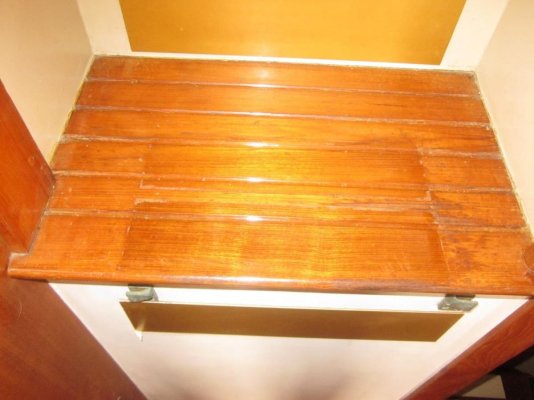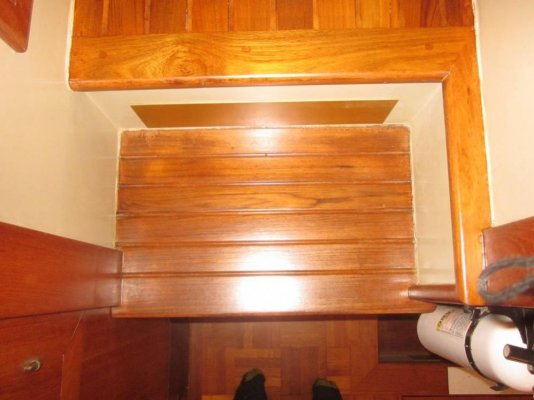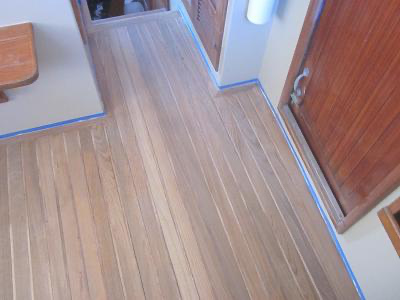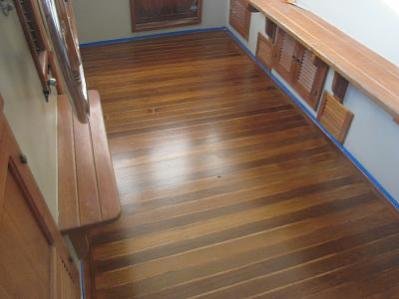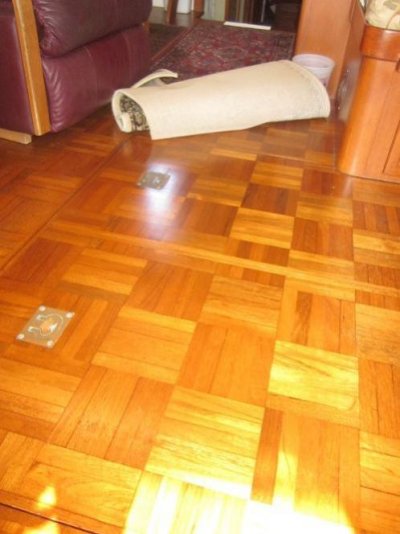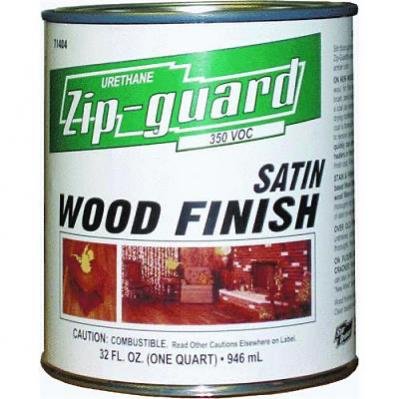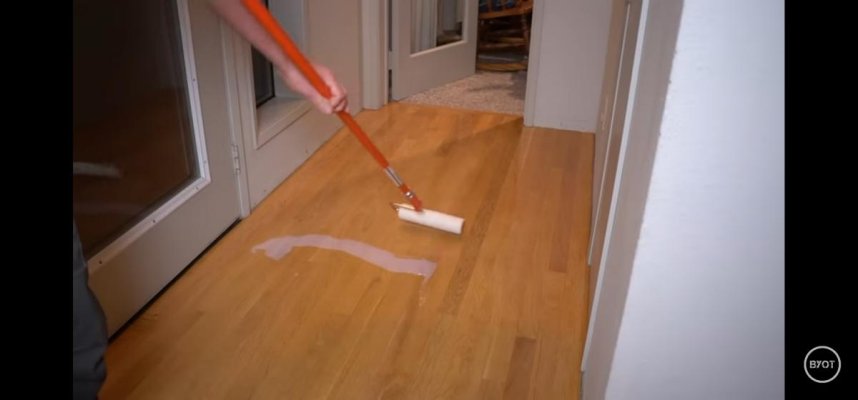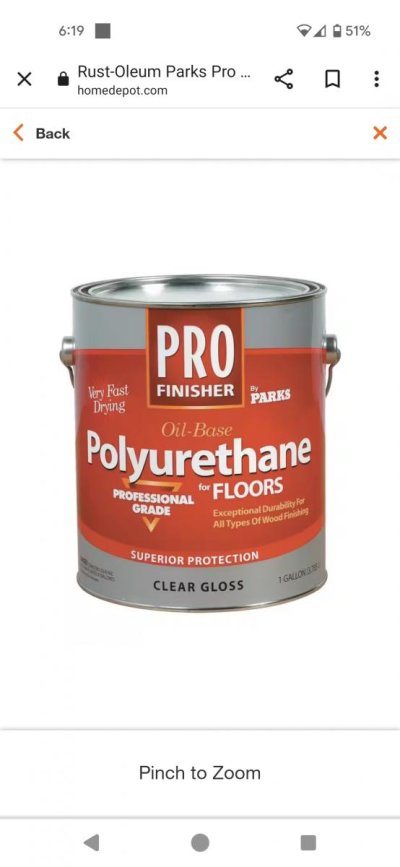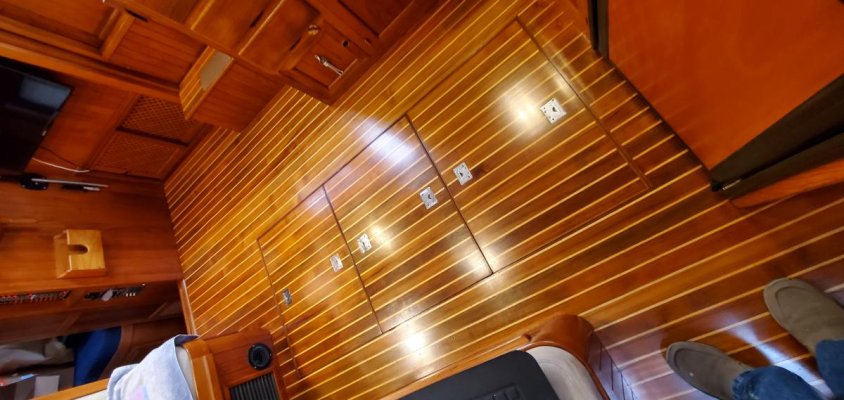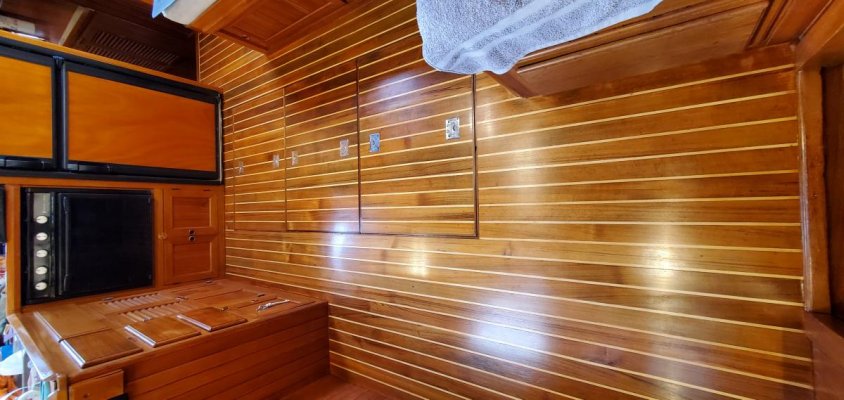I'm refinishing my teak floor. I have a 1981 Marine Trader with the traditional teak strip flooring. It's gotten a lot of use over the last 16 years that I have owned her.
I am going to do a light sanding and my choice of finish is Epiphanies or Varathane satin polyurethane.
What are your thoughts for a floor covering?
Do I understand it correctly you want to put paint or epoxy on teak ?
The former owner of my boat put epoxy and then painted it. It did look very nice, I did like the white color, which created a sense of space.
Unfortunately teak decks do work (move) and thus the epoxy formed cracks. Especially where the caulk was sitting the epoxy was cracked.
As a result rain water and sea water went in those cracks, saturated the wood, but could not get out anymore. I could feel the teak becoming softer, so a couple of weeks ago I decided to remove all the epoxy.
The bow deck is still sort of OK, with 17 % moisture in the teak. I hope that will dry out and that I won't need to remove it.
The stern and side decks however were at 40 - 45 % moisture, some parts are completely rotten and I fear this cannot be saved anymore, so started looking for an alternative.
So if you are planning to paint the teak deck take at least a flexible paint, so you don't end up with rotten teak below the paint like I did.
As a result of what the former owner did, in the end I will have to remove the teak from the stern and side decks, reinforce the hull below (some parts are soft as well), then either put new teak, add more fiberglass or come up with some other product. Removing the teak will basically lower the deck with about 10 - 12 mm and that presents all kinds of other problems, so was looking for something to compensate that
Last week I was introduced to Marinedeck 2000, which is a cork based material that looks like teak. It is completely waterproof, does not become warm in the sun, does not need to be screwed into the deck (just glue) and it is possible to do it yourself.
This material is produced by a company call Stazo in the Netherlands, but they sell it everywhere. As a guidance look for about 250 euro per m2 (is around 9 - 10 sqft).
If I hire a company to do all the work it is going to cost me around 25.000 euro to repair the side and stern decks. If I do it myself I am looking at roughly 10.000 euro and that is without the cost for the marina.
In other words, I will never put epoxy on a teak deck again.

